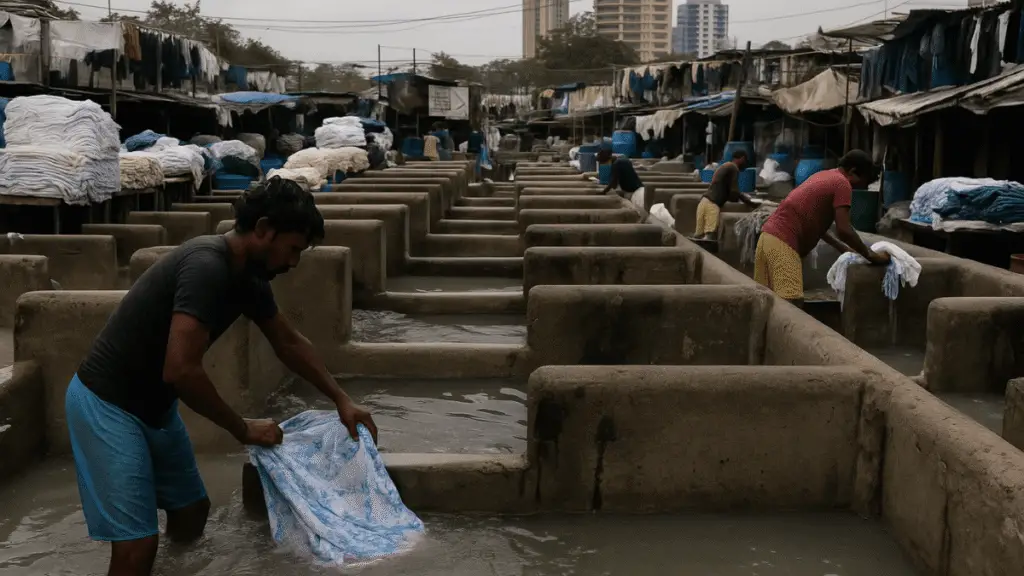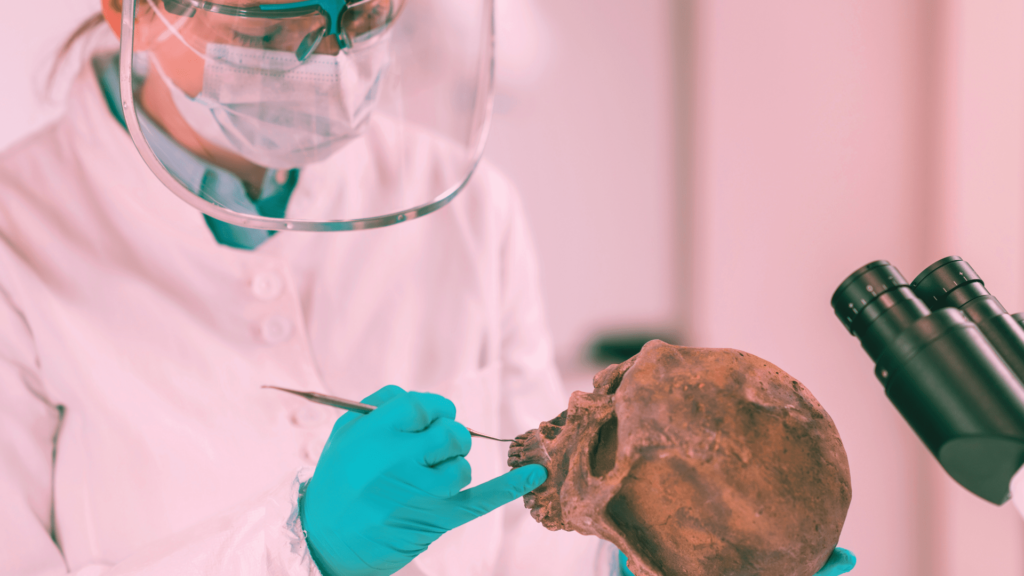Did you know that India has one of the biggest dhobi ghats in the world? Located on the banks of the Mahalaxmi River, it’s the Mahalaxmi Dhobi Ghat in Mumbai, India.
Nestled in the heart of Mumbai, this open-air laundry is home to hundreds of washermen and women. Some families have lived and worked here for generations. According to The Times of India’s 2017 report, 100,000 clothes are washed here daily.
The washermen and women stand knee deep in detergent water, scrubbing, beating, and rinsing clothes in large wash cabins made of cement from sunrise to sunset and beyond. On an average day, they spend about 12 to 15 hours half immersed in the soapy, detergent water surrounded by bleach and textile dyes.
Related article: How Climate Change is Driving Genetic Adaptation- 4 Real Examples.
From far away, this all looks very fascinating, the hundreds and thousands of clothes swirling in the wind with a splash of different colours. But… The reality is quite shocking.
Being in soapy water for the whole day makes their skin dry, cracked and itchy. Some even experience stubborn rashes and wounds that don’t heal easily. Prolonged wet work can also cause fungal infections and nail disorders.
The detergents they use are harsh, industrial-grade, strong powders and liquids, which are meant to remove the toughest of stains. Some even use fabric dyes and bleaches. Now, this causes a serious problem and even affects the next generations.
I’m talking about the harmful effects of these chemicals on our genetics. Many detergents contain harsh chemicals like benzidine-based compounds and azo dyes. And these compounds are known mutagens and carcinogens.
What does that mean? Prolonged direct contact with these chemicals can damage/ mutate their DNA and lead to conditions like skin cancer.
Chronic skin exposure, like when a person with an unhealed wound keeps practising the washing and stays half drenched in these detergents, water ends up allowing these chemicals into the bloodstream.
Once inside, they can generate oxidative stress and lead to DNA damage. This damage generally does not affect the genetic makeup, but if the exposure is persistent, it can lead to mutations in somatic cells, resulting in various skin problems and even skin cancer, again.
In several studies, over 60% of dhobi ghat workers reported skin problems. Breathing in the chemicals of these products, for all day long, can irritate eyes, cause coughing, and make breathing hard for some workers. People working here often suffer from dermatitis, eczema and chronic skin dryness due to harsh surfactants.
On the other hand, it has an extremely harsh impact on the environment as well.
Millions of synthetic fibres are shed from clothes during washing, especially in dhobi ghats and commercial laundries, where filtration systems are often absent. These fibres enter water bodies, accumulate over time, and disrupt aquatic ecosystems.
Meaning, it doesn’t only have a direct impact on our genetics, but it also affects the aquatic biodiversity of the Mahalaxmi River.
Read more: How a River Is Rewriting Our DNA- The Story of Yamuna.
Microfibers are termed as silent disasters of this open-air laundry business.
Most of these particles come from synthetic fabrics such as polyester and nylon, which are non-biodegradable. Once in the water, these microfibres harm aquatic life and eventually make their way into the human food chain.
Again, this has two consequences: it reduces the aquatic genetic diversity and damages our DNA indirectly through the food chain.
Not only microfibres, but also wastewater from dhobi ghats typically contains high levels of dyes, phosphates, detergents, and heavy metals.
This contaminated water, when dumped in rivers and surrounding water bodies, can cause eutrophication, resulting in harming the aquatic life because of low oxygen, and these dyes can even block sunlight penetration in water, harming the photosynthetic aquatic plants.
In several interviews available online, these workers say that they are destined to work like this, and if they don’t work, how are they going to earn? After all, they have to run families, so rather than weeping about their condition, they choose to accept fate and move on with life. That’s a brave thing to do, right?
Sources:
This story is inspired by the YouTube channel KK creation. We are thankful to creator Kavya for covering such stories.
Mumbai Dhobi Ghat, World’s Biggest Open Air Laundry By Mumbai Dream Tours.
Islam, Md. M., et al. “A Critical Review on Textile Dye-containing Wastewater: Ecotoxicity, Health Risks, and Remediation Strategies for Environmental Safety.” Cleaner Chemical Engineering, vol. 11, 2025, p. 100165, https://doi.org/10.1016/j.clce.2025.100165. Accessed 16 Aug. 2025.



Love the positive vibes in this post! Really uplifting 💪
Thank you ABM
You create space where people feel safe to be themselves
Your work continues to make a real difference 🌻 🚀 💕 in communities around the entire world